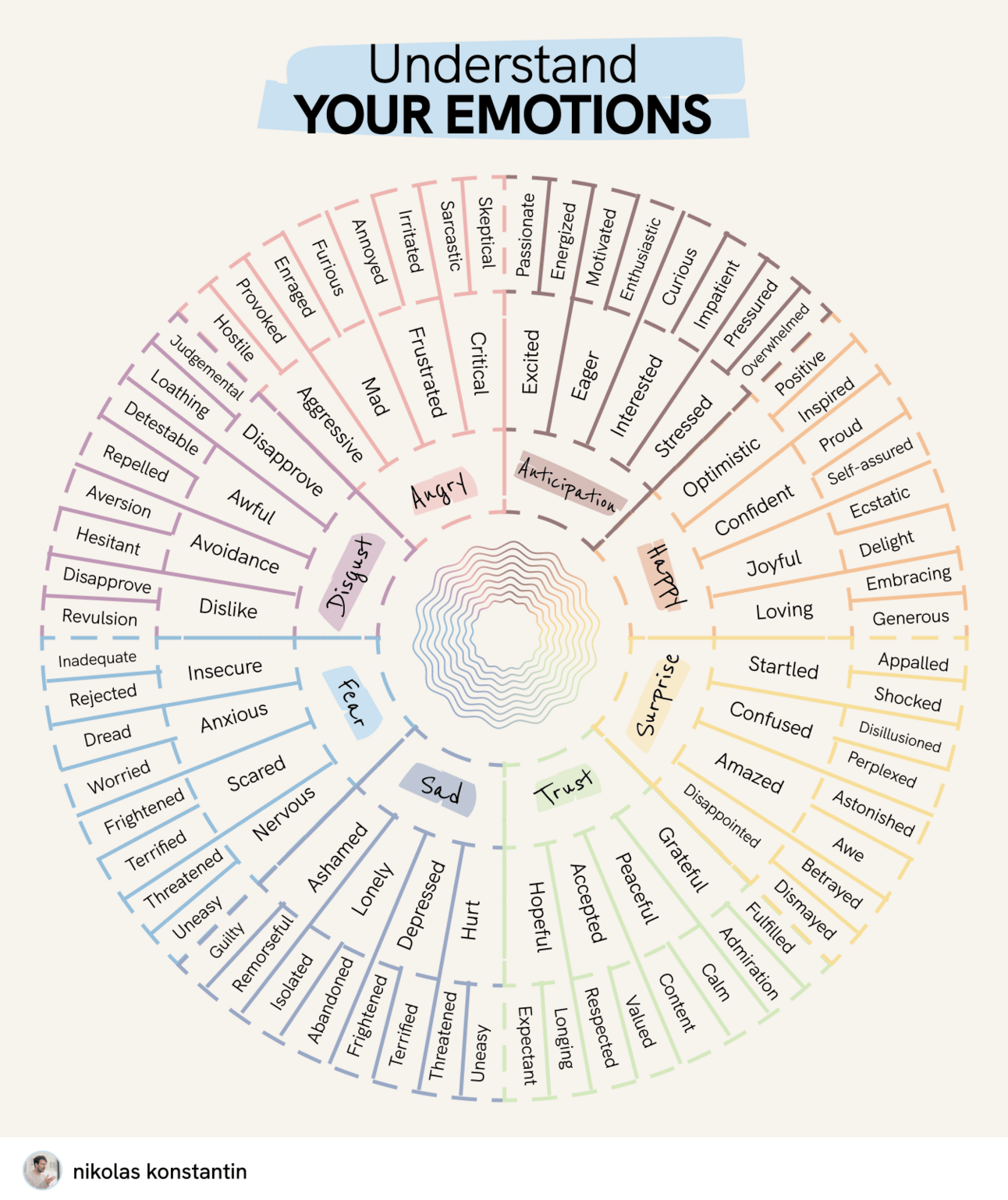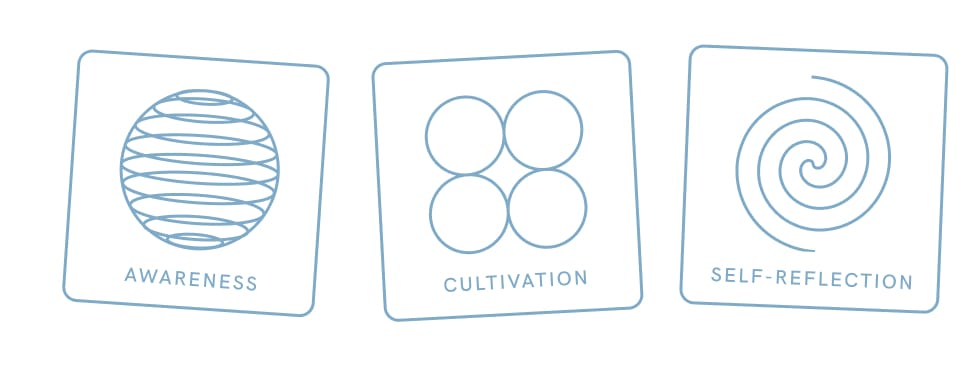- The Mindful CEO
- Posts
- How to "feel" better:
How to "feel" better:
Train your EQ with the wheel of emotions

Hi Mindful CEOs,
The hard truth:
Most leaders don't know how to feel themselves:
They are feeling.
But they usually have a deficiency…
• describing what they feel
• allowing the feeling
• & understanding the intelligence behind that feeling.
This is bad news.
If our leaders dont know how to feel themselves, they
• are more prone to take terrible decisions
• will be less empathic, as they dont feel themselves
• & act out from a child state without noticing.
In a frozen world, feeling is the ultimate rebellion.
Emotional Intelligence starts with training: This starts with noticing and feeling more.
For this you need to aquire emotional depth.
Enter the Wheel of Emotions: A vocabulary of feeling.

The Wheel of Emotions
The inner core emotions on this wheel are foundational. They serve as the root feelings from which more nuanced, secondary emotions emerge.
Each one acts as a family of emotions.
The outer layers reflect variations in intensity or expression of these core feelings.
Learn what each emotion tells you:
1. Anger:
Anger often signals a response to perceived injustice, violation of personal boundaries, or frustration. It can motivate protective or assertive actions to address perceived wrongs or restore balance.
2. Anticipation:
This emotion, sometimes linked with curiosity or excitement, prepares individuals for action and helps them focus on future possibilities. It can drive planning, preparation, and engagement with new opportunities or challenges.
3. Joy:
Joy reflects positive engagement and satisfaction, which reinforce behaviors and relationships that bring fulfillment. It encourages connection, creativity, and an openness to new experiences
4. Trust:
Trust is foundational for forming bonds and cooperation. It fosters social connection, safety, and a sense of reliability in relationships, which is essential for building supportive communities and teamwork.
5. Sadness:
Sadness helps individuals process loss, disappointment, or unmet expectations. It can lead to introspection, fostering growth, empathy, and stronger connections with others who provide support and comfort.
6. Disgust:
Disgust serves as a protective response, often triggered by things perceived as harmful, toxic, or culturally unacceptable. It can help people avoid risks and maintain social norms.
7. Surprise:
Surprise signals an unexpected event, capturing attention and promoting rapid cognitive processing. Depending on the context, it can lead to excitement or caution, helping individuals adapt quickly to new information.
8. Fear:
Fear is a protective emotion that prepares individuals to respond to perceived threats, either through fight, flight, or freeze responses. It heightens awareness and vigilance, keeping individuals alert to potential dangers.

“It is not our differences that divide us. It is our inability to recognize, accept, and celebrate those differences.”

Don't be that leader that doesn't feel.
Be precise.
Train with the wheel.
What helps you to "feel" better?
Yours,

P.S. Leading is hard.
Here is how I can support you to lead yourself and your organization:
A la Carte Executive Training:
Each year, I support selected leaders & their organizations in transforming into more resonant versions of themselves. Want to be coached by me? Apply hello.
The Yearly Reflection Space for Leaders:
A Beautiful Mind for Executives:
My virtual “A Beautiful Mind Meditation Course” for Executives. Train here.
The CEO Playbook Library:
My CEO Playbooks library features the best management and leadership theory. Exclusive access here.

Three Pillars of Wise Leadership
PPS: And because you deserve it - here is your bonus.
My 10 “Most Popular Mini Leadership Guides”:

Thanks for reading.
Did you enjoy this mail?
Is there a topic you want to read?
Would you like to see anything changed?
Just reply to this mail. I will get back to you.
Enjoy the newsletter?
Please forward this to a pal. It only takes 18 seconds. Making this one took 12 hours.
See you next Monday,

